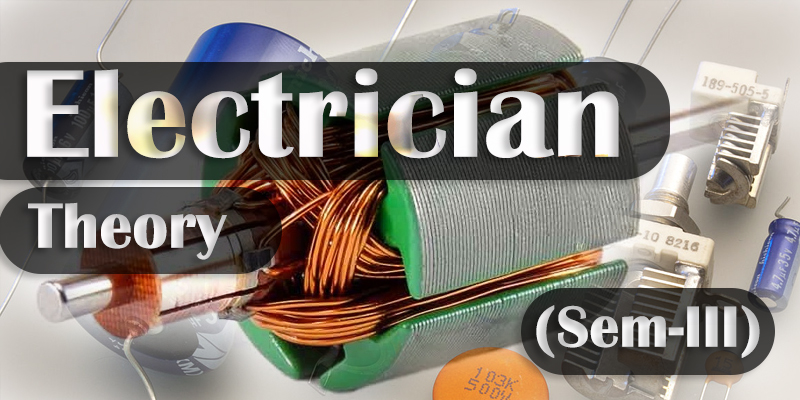Skip to main content

- General concept of rotating electrical machines. Principle of DC generator. Use of Armature, Field Coil, Polarity, Yoke, Cooling Fan, Commutator, slip ring and Brushes, Laminated core etc. E.M.F. equation Separately excited and self excited generators. Series, shunt and compound generators.
- Armature reaction, Commutation, inter poles and connection of inter poles. Parallel Operation of DC Generators. Load characteristics of DC generators. Application, losses & efficiency of DC Generators. Routine & maintenance.
- Principle and types of DC motor. Relation between applied voltage back e.m.f., armature voltage drop, speed and flux of DC motor. DC motor Starters, relation between torque, flux and armature current. Changing the direction of rotation. Characteristics, Losses & Efficiency of DC motors. Routine and maintenance.
- Methods of speed control of DC motors. Lap and wave winding and related terms.
- Working principle of three phase induction motor. Squirrel Cage Induction motor, Slip-ring induction motor; construction, characteristics, Slip and Torque. Different types of starters for three phase induction motors, its necessity, basic contactor circuit, parts and their functions.
- Single phasing prevention. No load test and blocked rotor test of induction motor. Losses & efficiency. Various methods of speed control. Braking system of motor. Maintenance and repair.
- Concentric/ distributed, single/ double layer winding and related terms.
- Working principle, different method of starting and running of various single phase AC motors. Domestic and industrial applications of different single phase AC motors. Characteristics, losses and efficiency.
- Concentric/ distributed, single/ double layer winding and related terms. Troubleshooting of single phase AC induction motors and universal motor.
- Principle of alternator, e.m.f. equation, relation between poles, speed and frequency. Types and construction. Efficiency, characteristics, regulation, phase sequence and parallel operation. Effect of changing the field excitation and power factor correction.
- Working principle of synchronous motor. Effect of change of excitation and load. V and anti V curve. Power factor improvement.
- Rotary Converter, MG Set description and Maintenance.
